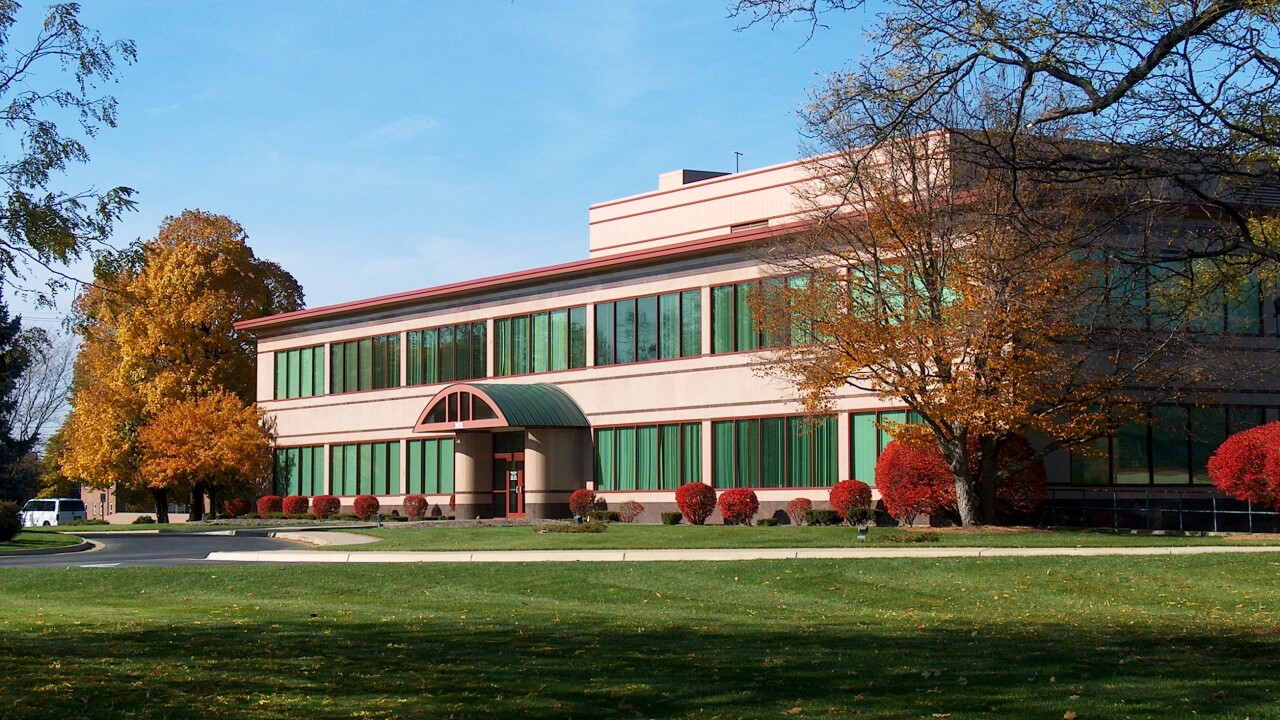Firm leaders know that their tech stacks can be more than just overhead or infrastructure — they can be key strategic assets in the firm's overall mission, driving efficiency and growth in ways that go well beyond their use in client engagements. But not all of them know what, exactly, it means to leverage their technology this way. When someone says firms should be strategic with their tech stacks, what specifically does this involve?
Before anything else, it means adopting a problem-solving mindset that seeks technology that addresses specific problems the firm has, versus buying the technology first and figuring out a use case later.
"I think first it means not asking, 'What tool are we going to deploy or buy?' but rather, 'What problem are we solving, and how aligned it is with the overall corporate vision and strategy?'" said Kacee Johnson, principal of fintech at technology advisory firm Radical and former vice president of strategy and innovation with

Donny Shimamoto, head of accounting tech advisory firm
"Part of creating that sustainable firm is starting first with the mission, vision, values and business strategy of the firm, and using that to then drive the services that we're providing, and then using that to drive what tech I need to support delivering those services," he said.
Jim Bourke, managing director of the advisory practice at Top 100 Firm Withum, added that these considerations should not be made in isolation but in active conversation with key practice leaders — not only to better understand their needs, but also because they likely are more aware of the specific solutions on the market for their areas of specialization. He added that they've likely also talked to their colleagues at other firms about technology as well, and so are also more likely to know what solutions have worked well at other firms.
"So that's what I would do: I would get myself up to speed by the major service lines, generally audit and tax, and find out what the competition is doing in those specific areas as well," he said.
Misalignment between the tech strategy and the broader firm strategy could be not just wasteful but potentially dangerous, added Bourke, raising the example of a firm that specializes in health care industry clients.
"Maybe the firm is very much involved in health care and there is a lot of HIPAA work. There are a lot of HIPAA rules when it comes to servicing health care clients. Well, maybe your internal technology group is not aligned with that strategy, and they select a technology tool that, quite frankly, doesn't have encryption or may violate HIPAA rules. This is where everyone needs to be on the same page. Make sure whoever is in charge of the technology direction in the firm has a seat at that table, and is aligned with where the firm is going from a strategy perspective," he said.
The wider view, and the longer
These are lessons that Akshay Shrimanker, head of Shay CPA, has learned over the many years he has been a firm leader. His firm does regular strategic reviews of its tech stack to see what has and has not worked, and to discuss what they'll do with what doesn't. These considerations, while about technology, go past the actual software itself and into its wider impacts on the practice.
"So it really starts from 'What are our strategic goals for the year? How do these tools actually fit in from a practical standpoint?'" he said.
For example, his firm invested in tax research software not because they feared missing out, but because it filled a specific need they had at the time. While based in New York City, during the pandemic lockdowns both staff and clients were spread out all over the country, which raised a host of new challenges they'd never had to consider before. Where before they dealt mainly with local issues, now they suddenly were faced with a real need to get quick information about California tax regulations, Texas tax rates, Massachusetts filing procedures and more.
"Because now the teams are spread out, so things are a lot more distributed. So the rise of remote teams and district distributed teams kind of was our trigger to invest in tax research," he said. While the lockdowns have since ended, the software remained, which has significantly bolstered the firm's tax advisory offerings.
Past the technology itself, Shimamoto also talked about how a tech stack can help screen clients. Staff have links in their email signatures that take prospective clients to a calendar page to book a meeting. This, he said, is the "first gate." If a client doesn't know how to schedule a meeting with a simple calendar app, "that's not a client for us."
"You'd be surprised at the number of clients that can't do that. It's not a lot, but there are some that get all confused and say 'What link? Oh, I couldn't figure out how to do that' once they got to the site. … The other thing we would look at is the client on social media. For us, if a client's not on LinkedIn, that's a red flag to us; it shows that they're not paying attention to what's going on," he said.
Johnson noted that the tech stack can also play a role in recruiting and retention, especially for younger talent. She was blunt in saying that younger people will not stay at a firm long if it has antiquated technology. Their expectations at work are shaped with what they grew up with in their personal lives, and considering the rapid pace of technology today, this means firms that don't keep up will have trouble keeping talent. At best they'll collect a paycheck as they actively look for something better.
"I've got a 14-year-old daughter. She's been using AI since she's 12 years old. She seriously believes her dad is a dinosaur because he still Googles things. Imagine what her expectations are going to be when she gets into the workforce," she said.
And it's not just about the tech itself but, rather, what their days will look like while using it. Bourke noted that, long ago, entry-level hires were making copies, grabbing coffee and other menial tasks that were likely beneath them. Firms with solid technology investments will instead have them doing more interesting, higher-value work, which is what young people want to do now.
"I would tell a young staff person in school, 'Why come to my firm? Because we're going to let technology do all those manual tasks that kids your age used to do, and I'm gonna put you in a position to leverage the knowledge that you have, that core understanding you've learned in school. … The entry-level kids, the interns, [they were] running for coffee, making copies. That's not going to happen here. We're going to let technology do the manual tasks, and we're going to let you deploy what you've learned in your education and what you do every single day,'" he said.
Understanding client technology
Another aspect of tech stack strategy is how it can support the specific niches a firm operates within. Taking on a speciality can be a great way to not only stand out in the market, develop high-value clients and deepen thought leadership. Shimamoto said that technology specific to the firm's niche is essential to offering these specialized services.
"As I start to look at what additional services or supplementary services I can provide, that usually means going deeper into an industry and addressing things that are more specific to that industry. [This could mean] additional tech offerings that perhaps integrate with the accounting systems that help them deal with other issues that are maybe accounting adjacent," he said.
Bourke made a similar point, using construction as an example. A firm that wants to primarily serve construction contractors would need to understand the technology tools they're using, as well as having solutions that can integrate with them.
"So here I am, I'm an expert in the construction industry. I'm going to go out and be a thought leader in the construction space. I'm going to say, 'Hey, I'm a CPA. I understand the technology tools that you use. I understand file structures. I understand your specific needs. And that's why you need to select firms like us, because we understand the technology that is deployed, and we can take your data and technology and bring it into our systems to do your tax returns,'" he said.
In addition to easing client interactions, Johnson noted that specializing can help focus a firm's tech stack to just what is needed for that niche, versus maintaining solutions for every possible contingency. She witnessed this herself at a previous job constructing virtual servers for accounting firms. Typically a firm would come with between 20 to 25 applications, but then there were some who came in with more than 100.
"Because they're not industry-specific. It was chaos to manage those and do updates and the firm, those poor folks, they then had to try and learn and support all these different industry-specific tools for every client," she said.
She added that specialization could also serve marketing purposes as it can serve as a powerful brand identity that helps differentiate the firm from others in the area.
"It actually defines your brand so much more when you can be the experts of your tech stack, for your staff, but also for your clients. And I get that you risk losing some logos over that, but you've got to have a vision here and make sure that you know you're sticking to it," she said.
Bourke added that technology can even go from supporting the firm's strategy to helping shape it directly, particularly with AI. For a client, he said, they might use AI to understand every single competitor that a prospect might have in their space, then understand what makes that prospect unique, as well as the industry-specific issues that they might face regarding tax or audit. From there it's a matter of approaching the prospect with what makes the firm uniquely positioned to solve its problems. It is not difficult to turn this same kind of analysis around on one's own firm as well.
"I don't care, small firm, big firm, you can ask Copilot the same questions, you can ask ChatGPT the same questions and leverage AI," he said.
No final destination
But just as important as understanding how technology can address a firm's issues is understanding that it's rarely a silver bullet. Johnson said that leaders should not think of their tech stack strategy as a one and done thing but an ongoing journey with twists and turns along the way.
"Firms [are] looking at their tech strategy as a destination and not a journey. It's like they expect to have this perfect tech stack waiting for them. It's kind of crazy. But we all know how rapidly everything is changing. You're constantly going to be experimenting, adjusting, aligning tools with where your firm wants to go. You're not going to just arrive at this strategic stack, you're going to constantly be shaping it," she said.
Shrimanker agreed. Technology can do much to help solve a firm's issues, but it cannot do so by itself — and leaders should not expect it to.
"From my experience now, being a firm owner for over a decade, regardless of what technology is going to come out, nothing is going to really be solved if you have issues internally, or if you're not profitable, or if you're not getting enough clients, or there's staffing issues, or there's issues between people. No tool or technology is going to solve that problem. So I think a lot of the time, we may be looking at these software and the tools as a Band Aid, rather than really solving more deep-seated issues that firms are going through," he said.
This is the latest in a series of articles about managing your firm's technology. You can see our previous installment, examining the Minimum Viable Tech Stack,





